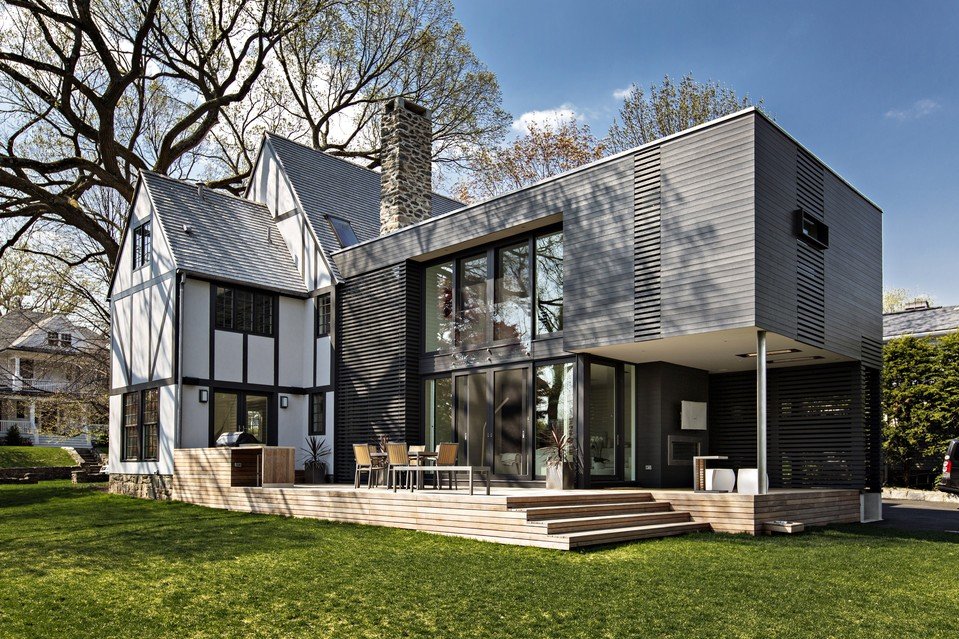#6613. Dual Facade: Traditional Tudor Meets Modern Minimalism
This architectural object is a magnificent example of a harmonious combination of traditional and modern styles in residential architecture. The left part of the building is executed in the classic Tudor Revival style with characteristic half-timbering — white walls and dark wooden frame elements creating a geometric pattern on the facade. The steep gabled roof with gray tiles and the massive stone chimney emphasize the historical stylistics of this part of the house.
In contrast to the traditional wing, the right part of the building represents a bold modern addition in the form of a minimalist cubic volume. The facade of this section is clad with horizontal dark gray panels creating a rhythmic texture. Large panoramic windows in the modern part maximize natural lighting and provide a visual connection with the surrounding landscape. Of particular note is the cantilevered projection of the second floor, creating a sense of lightness in the massive construction.
The unifying element of the composition is a wooden deck with wide steps that smoothly transitions into the well-maintained lawn. The terrace serves as an intermediate space between interior and exterior, strengthening the connection of architecture with the natural environment. The open dining area on the terrace organically fits into the overall concept.
This project is a brilliant example of architectural renovation where a historical object is not just preserved but complemented by a contrasting modern volume, creating a fascinating dialogue between past and present, tradition and innovation in architecture.
